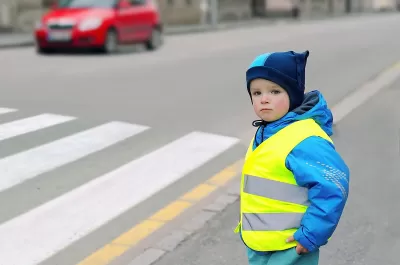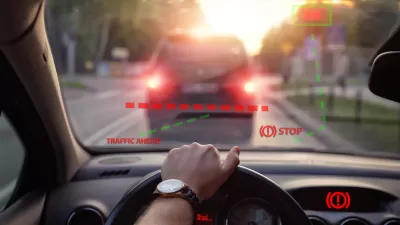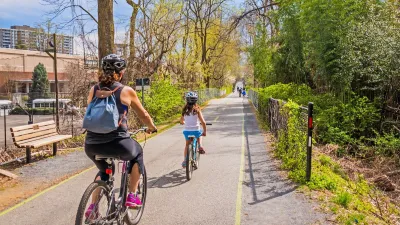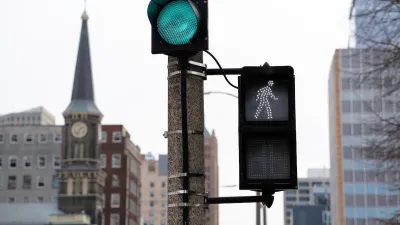The automatic braking systems on two major car models failed to stop for pedestrians wearing reflective strips in a test.

New research from the Insurance Institute for Highway Safety indicates that automatic braking systems on Honda and Mazda cars fail to recognize pedestrians wearing reflective clothing, reports Gersh Kuntzman for Streetsblog USA.
“In the study, researchers outfitted an adult-sized dummy black clothing, one in white clothing, one with a reflective jacket and one with a reflective strips in a configuration similar to those worn by roadway workers (though their safety gear is generally bright orange or yellow rather than black).” In test conditions with various types of lighting, Honda and Mazda vehicles hit crash test dummies wearing reflective strips, and the Honda car hit the dummy wearing a reflective jacket. A Subaru Forester model stopped for most of the dummies in the test.
The study shows that wearing reflective clothing — often the only safety advice given to pedestrians — won’t always protect people walking. According to researcher David Kidd, “People are able to perceive what's out on the roadway and make quick decisions when things get confusing or are uncertain. And these technologies are not as adept at doing those type of things as we are.”
FULL STORY: Alarming Report Shows that Two Auto-Braking Systems Can’t See People in Reflective Garb

Manufactured Crisis: Losing the Nation’s Largest Source of Unsubsidized Affordable Housing
Manufactured housing communities have long been an affordable housing option for millions of people living in the U.S., but that affordability is disappearing rapidly. How did we get here?

Americans May Be Stuck — But Why?
Americans are moving a lot less than they once did, and that is a problem. While Yoni Applebaum, in his highly-publicized article Stuck, gets the reasons badly wrong, it's still important to ask: why are we moving so much less than before?

Using Old Oil and Gas Wells for Green Energy Storage
Penn State researchers have found that repurposing abandoned oil and gas wells for geothermal-assisted compressed-air energy storage can boost efficiency, reduce environmental risks, and support clean energy and job transitions.

San Antonio Remains Affordable as City Grows
The city’s active efforts to keep housing costs down through housing reforms and coordinated efforts among city agencies and developers have kept it one of the most affordable in the nation despite its rapid population growth.

What Forest Service Cuts Mean for Cities
U.S. Forest Service employees work on projects that have impacts far beyond remote, rural wilderness areas.

North Texas Transit Leaders Tout Benefits of TOD for Growing Region
At a summit focused on transit-oriented development, policymakers discussed how North Texas’ expanded light rail system can serve as a tool for economic growth.
Urban Design for Planners 1: Software Tools
This six-course series explores essential urban design concepts using open source software and equips planners with the tools they need to participate fully in the urban design process.
Planning for Universal Design
Learn the tools for implementing Universal Design in planning regulations.
Heyer Gruel & Associates PA
City of Moreno Valley
Institute for Housing and Urban Development Studies (IHS)
City of Grandview
Harvard GSD Executive Education
Salt Lake City
NYU Wagner Graduate School of Public Service
City of Cambridge, Maryland





























